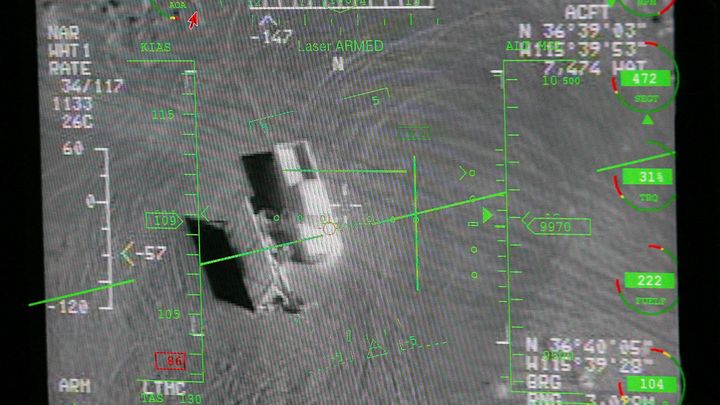On Monday, President Trump signed the the $717 billion annual National Defense Authorization Act, which was easily passed by Congress in weeks prior. Much attention has understandably been placed on big-ticket items like $7.6 billion for acquiring 77 F-35 fighters, $21.9 billion for the nuclear weapons program, and $1.56 billion for three littoral combat ships—despite the fact that the Navy requested only one in the budget.
What has gotten less attention is how the bill cements artificial intelligence programs in the Defense Department and lays the groundwork for a new national-level policy and strategy in the form of an artificial intelligence commission. As artificial intelligence and machine learning algorithms are integrated into defense technology, spending on these technologies is only going to increase in years to come. While spending for many AI programs in the NDAA is in the tens of millions at present, one budget for a project that did not go through the normal appropriations process could have a total cost of $1.75 billion over the next seven years.
Artificial Intelligence: It’s not just for killer robots
While for many notions of artificial intelligence in warfare draw up visions of “killer robots”—or, more technically, Lethal Autonomous Weapons Systems—the truth is that for the foreseeable future artificial intelligence will be used by the Pentagon for seemingly more mundane tasks like analyzing drone imagery.
“Everyone’s fearing the autonomous swarm of drones that go in and wreak havoc without any human control,” retired Navy Cmdr. Theodore Johnson, a cyber operations and intelligence expert, tells Sludge. “A lot of people are going to focus on AI applications in warfare, but I think that is a less important development than its use in intelligence. How AI is used on intelligence data that’s gathered is going to revolutionize warfare more than how AI is used in the application of lethal force.”
Project Maven, the Defense Department’s program to use machine learning to identify and categorize objects in drone imagery, is the clearest example of that trend. The program received a significant increase in funding and moved from a budget line focused on rapid prototyping of new technology to a separate line item where it is the major ticket item. In last year’s NDAA, Project Maven was allocated $16 million. This year’s defense bill increases its funding to $93.1 million.
“There’s not enough eyes to look at every minute of video,” says Johnson. “But if you can train artificial intelligence to watch all of that collection and flag those things that require human analysis, then there’s no restriction on how much data you can collect and how much data you can process.”
Congress fully funded the Pentagon’s budget request for Project Maven despite recent controversy surrounding the program. Employees at Google resigned over the company’s involvement in Project Maven, many of whom argued that humans should be tasked with categorizing drone images rather than computers, since those inferences could be used to determine lethal drone strikes. Others objected to Google working with the Defense Department at all. After the outcry, Google announced that it would not renew its contract for Project Maven with the Defense Department.
That means that the Defense Department will be seeking a new private sector partner to replace Google, as Project Maven is explicitly a public-private partnership—“a commercial technology initiative that inserts commercial AI into existing programs of records,” according to the budget request.
“Technology has been moving at an exponential pace and the Defense Department has been left behind,” Johnson tells Sludge. “Unlike in the past, the Defense Department is not the leader in technology anymore—we’ve been overcome by the private sector. AI was not something that we were going to create skunkworks in the Pentagon and then create a military application and then lease it out to the business world. In fact we need to go out and buy it from the private sector.”
“Everyone realized there’s tons of money to be made if you can figure out how to get AI integrated into the Defense Department,” Johnson added.
Booz Allen Hamilton, for instance, recently landed an artificial intelligence contract with the Pentagon worth $885 million over the next 5 years. It is unknown at this time precisely what Booz Allen will be working on and what programs the contract is a part of, some of which may be classified. It is possible that Booz Allen’s work will at least in part be to replace Google’s work on Project Maven. In a press release, Booz Allen stated that it’s work will allow the Defense Department to “rapidly employ artificial intelligence, neural and deep neural networks” for intelligence, surveillance, and reconnaissance operations.
“Where the funding is right now is for Project Maven and the broader effort to integrate AI into the drone imagery analysis portion of drone operations,” Dan Gettinger, co-director of the Center for the Study of the Drone at Bard College, tells Sludge. “The thrust for AI at the moment is making operations more efficient, reducing manpower, and reducing risk for human operators.”
The FY19 NDAA also includes $15 million to “enhance and accelerate artificial intelligence research” in the service branches—$10 million for the Air Force and $5 million for the Army. However, there was no specific budget request from the Pentagon for that research that Congress nonetheless inserted into this year’s bill, showing that Congress considers improving artificial intelligence capabilities a priority.
The Air Force and Army did not respond at press time to questions about how those unrequested research funds would be used.
Pentagon doubling down on AI
This NDAA is not the only recent indication that the Pentagon is seeking to integrate artificial intelligence.
In a June reprogramming request, the Pentagon requested $70 million to establish a new Joint Artificial Intelligence Center (JAIC). Reprogramming requests are used to shift around money that was allocated by Congress for a different purpose. But when a reprogramming request is used for a “new start” program, it means it is creating a program that was not authorized by Congress in prior legislation. The JAIC is one such “new start,” and the request estimates that it could have a total cost of up to $1.75 billion over the next seven years.
“Throughout the course of a year, from the time of appropriations to expenditure, priorities can of course shift and change so then the administration has to go back to Congress for approval to reallocate funding from a lower priority to a higher priority project,” says Stephen Ellis of the nonpartisan budget watchdog Taxpayers for Common Sense.
However, those requests only need to be approved by the appropriations committee, not all of Congress. “Starting a new program via shifting money away from a congressionally-approved program short circuits the congressional oversight process,” explains the Taxpayers for Common Sense website.
The Defense Department also made permanent a key pipeline for artificial intelligence technology this month. In an August 3 memo, Deputy Secretary of Defense Patrick Shanahan said that the Defense Innovation Unit-Experimental would no longer be experimental. “Removing ‘experimental’ reflects DIU’s permanence within the DoD,” he wrote.
DIU has been key to getting cutting edge technology into the Defense Department, often using pilot programs from smaller, less-established companies rather than major defense contractors. The agency’s website lays out its purpose succinctly: “We’re contracting with companies offering solutions in a variety of areas—from autonomy and AI to human systems, IT, and space—to solve a host of defense problems.” Many of DIU’s portfolio projects use machine learning algorithms, artificial intelligence, or enhance drone systems in a variety of ways.
The AI commission
The NDAA also authorized $10 million to be spent on a new National Security Commission on Artificial Intelligence. The commission will have 15 members, appointed by various offices, including the Secretaries of Defense and Commerce, and the Chairs and Ranking Members of the House and Senate Armed Services Committees. It will be tasked with assessing how the Defense Department can better use artificial intelligence and machine learning capabilities for national security, as well as associated national security risks and ethical considerations.
It is also the first time there will be a coordinated national security strategy for artificial intelligence.
“This effort to set an organizational priority for developing AI will be significant over the long-term,” said Gettinger, of the Center for the Study of the Drone. “They’re not just developing AI for a specific program or specific services. I think this sort of strategic coordination is going to be really important and is needed for this technology.”
The proposal for the commission original came from Senators Jodi Ernst (R-Iowa) and Catherine Cortez Masto (D-Nev.), who see it as a way to stay in the artificial intelligence race with China.
“The commission proposed in this bill will provide guidance on how we cultivate AI to help ensure we stay ahead of countries like China in this space, while also building guardrails to make certain the U.S. government responsibly uses AI,” said Cortez Masto in a statement when she introduced the original bill.
Companies are already angling to influence the commission, with the likes of Intel publicly stating its desire to “assist” the commission. Cisco Minthorn, one of Intel’s top Senate lobbyists, wrote in a blog post: “As one of the pioneers in artificial intelligence, Intel looks forward to assisting the Commission with this important charge.” Minthorn personally lobbied on the NDAA, according to lobbying disclosures reviewed by Sludge.



